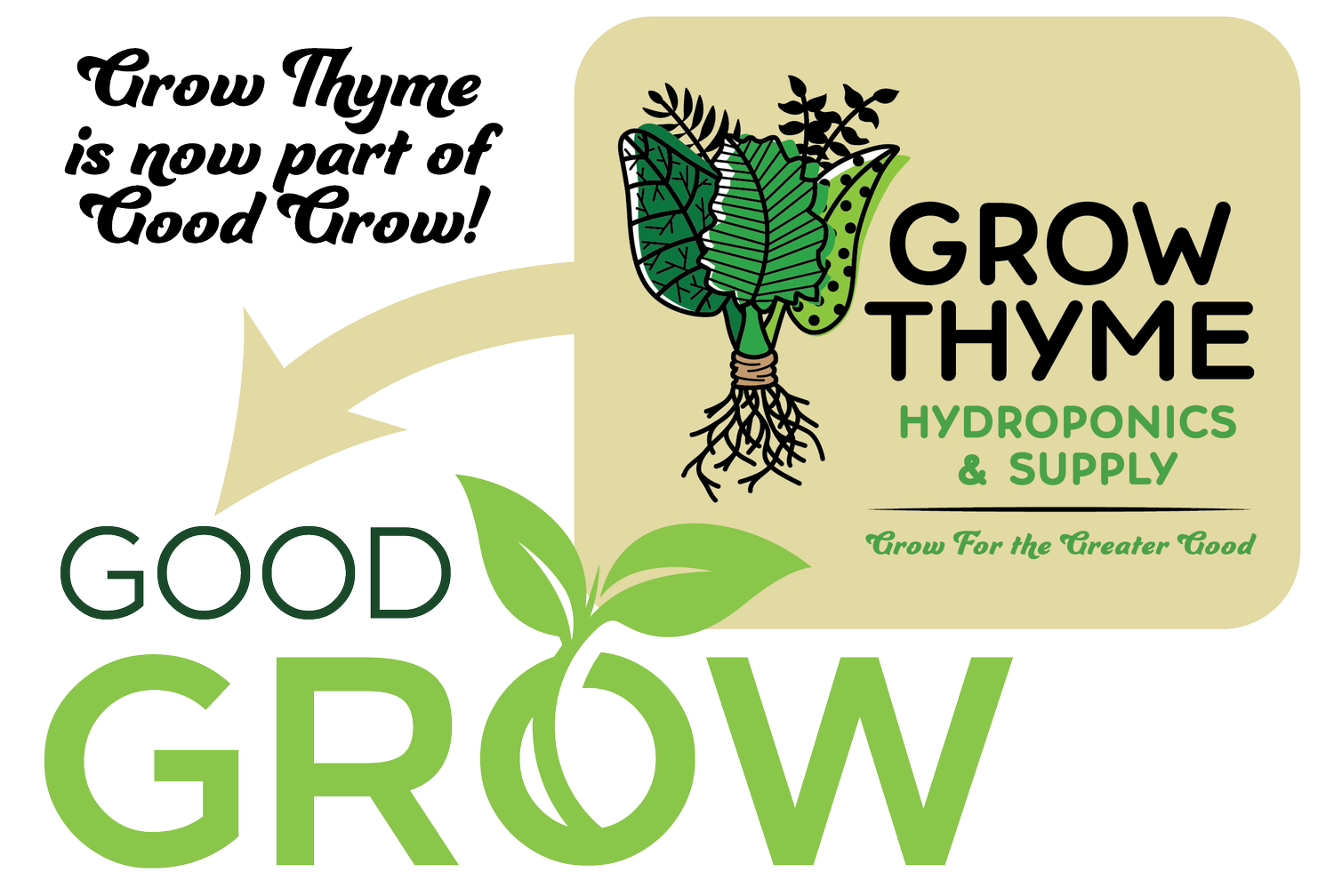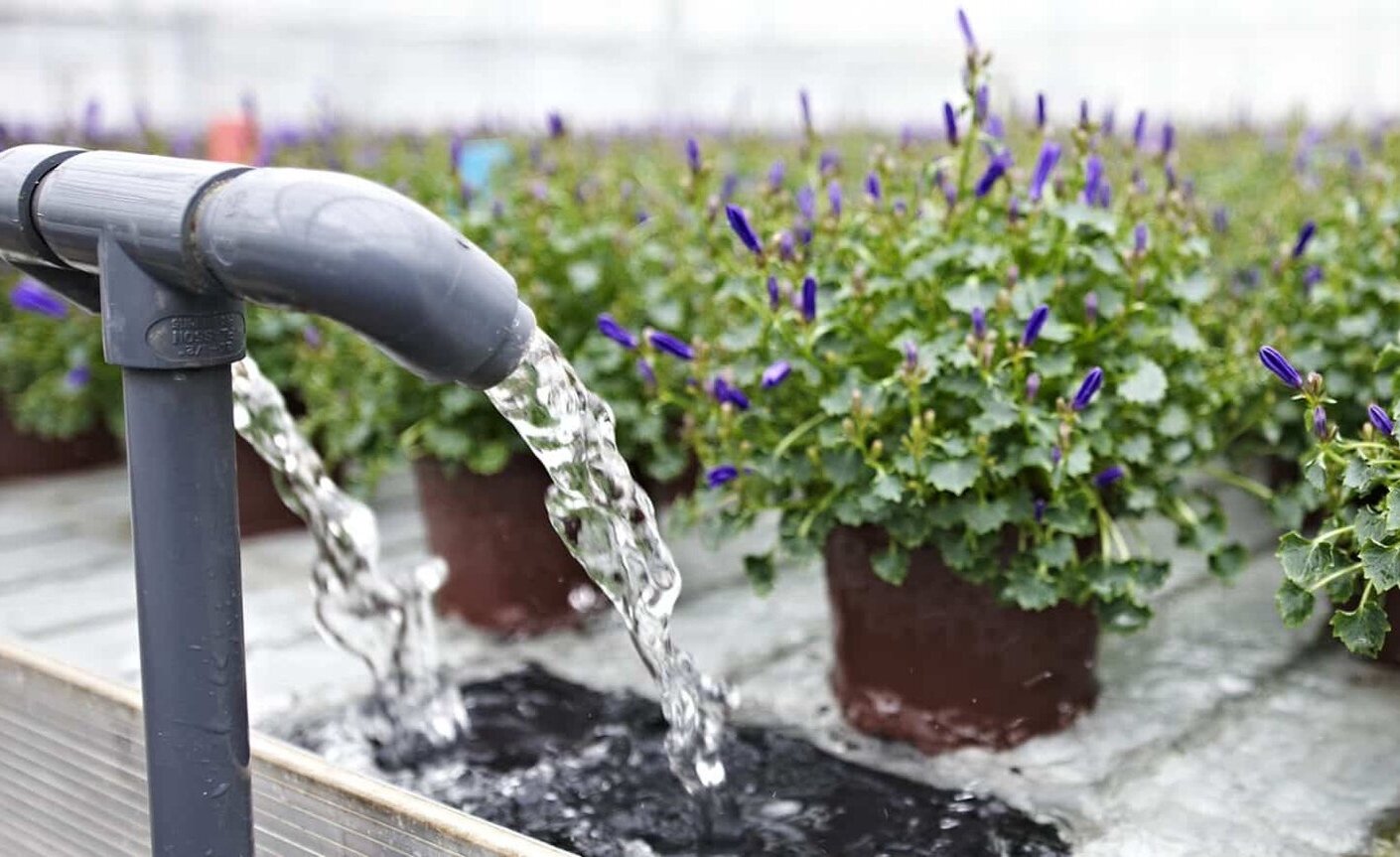Hydroponics Newbie Cheat Sheet
Starting in hydroponics may feel like a huge jump from what you’ve grown up knowing about traditional gardening and trying to grow your veggies.
But we are here to help you through that and have put together a guide of sorts to save you some experimenting time and help ease that learning curve.
Water
Where as in traditional gardening you only need to give your plants a comfy soil bed, an occasional nutrient boost, and plenty of water (that gets filtered by the soil), in hydroponics, your water is the life blood of your plants, and they need the healthiest version they can get!
It is best to use distilled, reverse osmosis purified, or filtered water in your hydroponic system. City or well water can contain chemicals that will hinder plant growth. Remember: your food is only as good as what you feed the plant when it is growing.
Distilled water can be found at your local grocery store in gallon jugs.
Reverse osmosis (RO) is a water purification process that uses a partially permeable membrane to separate ions, unwanted molecules and larger particles from drinking water.
In a pinch, you can also use a normal drinking water filter to remove various sediments before using it in your hydroponics system. Distilled and RO water is preferred though.
Ideally, try to keep the water in your hydroponic reservoir between 65-70 degrees Fahrenheit. If you have your system outside it is a good idea to wrap your reservoir in panda film (black and white reflective material) or some other reflective material (think about things like aluminium foil or a car windshield reflector for example).
Some other remedies include placing frozen water bottles in your reservoir or purchasing a water chiller to help regulate the temperature.
We recommend keeping your hydroponic system inside for the best results. That way you can let your air conditioner do all the hard work!
You can’t skip adding nutrients to your water! Without nutrients your plants won’t grow. When you remove the soil factor for hydroponic gardening, you also remove all the nutrients that plants need to grow and thrive. For that reason, it is important to add those nutrients directly to your water.
We recommend the General Hydroponics Flora Series as a versatile 3-part system that will give great results each and every time.
It is important to check your PH level after your nutrients are added. You can do that by using a PH Meter for quick and easy reads. PH test strips or even a PH testing solution will work too. The PH of your water should normally be between 5.5 and 6.5 but it ultimately depends on what plants you are growing.
Make sure to change your water every 1-2 months depending on the system type that you have. If your water gives off an odor or if it develops any sort of film on the surface it is time to change. It is okay to mix new water and nutrients to top off the reservoir in between cleaning your system out completely. Just make sure that you check the PH level often to ensure your plants are getting what they need.m
Don’t let your net cup touch the water. Only the roots should be in the water, because if the net cup and grow medium stay wet for too long it will cause root rot.
Nutrients
There are tons of different nutrient solutions. Some come in 3-part systems, some in 2-part, and others in 1-part. It is important to add nutrients to your water with each and every stage of the plant's life in hydroponics, since your plants can’t pull nutrients from the soil.
If you are only doing green veggies and herbs it is okay to use a 1-part system which caters to a GROW stage only. In this case we would recommend Dyna Grow or Botanicare Pure Blend Grow to get the job done.
If you are growing plants that will flower or fruit, you will need at least a 2-part system. The grow formula is used for the vegetative or green stages of a plant, while the bloom formula is used for flowering and fruiting stages. Many new hydroponic growers prefer the 2-part system because they don’t have to worry about mixing many different types of nutrients together.
General Hydroponics Flora Series—this is a 3-part system that we use for all of our plants—is the most versatile and can be used for everything from seedlings to the end of a fruiting cycle. This system includes Flora Gro, Flora Micro, Flora Bloom.
With this system, you must ALWAYS use all three parts. The rate at which you mix each part depends on what plant you are growing and what stage of growth that plant is in.
For example, a general purpose mix is 1-1-1 while a bloom mix will be 1 part gro, 2 parts micro, and 3 parts bloom. We have feeding charts available for free, and a video detailing the step-by-step process on our website on our education page.
Always mix nutrients directly into clean water and not with directly each other. Let each new addition sit and blend for a few minutes before moving on to the next. If you work with the the GH Flora Series and mix the Gro, Micro, and Bloom together alone, it will create a nutrient lock out, which means your plants will not be able to absorb the nutrients as intended, and ultimately they won’t grow.
CalMag or a Calcium, Magnesium, and Iron supplement is needed if you are using reverse osmosis water just to add back in the good stuff. It is extra important to add CalMag when dealing with flowering or fruiting plants, and it is also a very good idea when using coco coir as your growing medium.
Hydroguard is great to add to your nutrient solution at every growing stage because it creates a healthy growing environment. Hydroguard is a natural bacterial root inoculant designed to decompose organic matter and help convert it to nutrients that can be absorbed directly by plant roots. It can help keep bad bacteria and algae under control which will give your plants the best chance at growing strong.
Organic nutrient solutions are a favorite of hydroponic growers but they should not be used in a true recirculating hydroponic grow. Organic solutions like the General Organics series by General Hydroponics are better used when growing in coco coir. A drip system or hand watering the coco would be best in this case.
If you use organic nutrients in recirculating hydroponics or even in passive hydroponics, the water will develop a thick film on top., because organic nutrients tend to coagulate and separate over time.
Food grade hydrogen peroxide (35%) can be used to keep algae growth under control if it develops in your system or on your plants. Normal 3% hydrogen peroxide from the drug store is not recommended as it contains stabilizers to make it safe for the shelf.
Always make sure to dilute food grade hydrogen peroxide 12 parts water to 1 part peroxide. Be careful when handling this strength of peroxide, as it is corrosive and could burn your skin.
Seedlings need nutrients too. Mix your solution at ¼ strength during the seedling stage to get started.
Seedlings
How do you plan to start your seedlings? We offer starter pods in either Root Riot, Rapid Rooter, or rockwool. Let us know what you want to put in your system and we will germinate them for you and have them ready in just a few weeks.
It is possible to purchase a plant that is growing in dirt and wash off the roots before transplanting to your hydroponics system. However, this method is not normally recommended because your plant could develop shock when going from one growing medium to another.
If you plan to start your own seedlings, you will first need to decide what growing medium to use. We recommend peat moss or rockwool but coco coir and expanded clay pebbles (aka LECA or Hydroton) can be used too.
You will need a light if you plan to start your seedlings inside. We recommend an LED light for the best results.
A seedling heat mat will jump start your seedlings giving them the ideal temperature for sprouting early.
Your seedlings are ready to be transplanted to your hydroponic system once they are a few weeks old. It is important that the roots are a few inches long so that you can put them directly into your nutrient solution and water mix.
Lights
Is your hydroponic system indoors? If so, you will need to simulate the sun with some sort of light. We normally recommend LED Lights, but fluorescent lights can be used for vegetative-only plants that won’t flower or fruit.
Light cycles are important to know because if you are doing a vegetation-only grow, you can keep the lights on for 16 hours a day then off for 8. This is going to give you maximum output of your green veggies and herbs.
If you are trying to get a plant to produce flowers (and eventually fruit), you should switch the light cycle to 12 hours on and 12 hours off.
Use a light timer. They are very affordable and will save you tons of time and energy. Timers will allow you to set a designated time for the lights to flip on, and another for the lights to turn off each day. With a timer, your lights can be fully automated taking the guesswork out of it. Timers also give consistency to your plants which is when they will thrive the most.
These are the same timers you would also use for a pump for systems that don’t need it to run 24 hours a day.
Light height—If you are using a large LED light that gives off heat, keep in mind that your plants will feel that heat too. Keep the lights about 12-18 inches away in that case.
If you are using a fluorescent light or a smaller LED light that doesn’t give off much heat, then it is okay to put the lights closer to the plants. When in doubt, put your hand under the light for 30 seconds. If you feel heat then your plants will too.
Seedlings should be placed closer to the light so that your plants don’t become leggy. Plants become leggy when they don’t get enough light in early growth stages. They try to reach for the light which causes them to grow long and skinny. Leggy seedlings often will not grow into strong plants.
It might be best to start over if you think your plants are too leggy and can’t ultimately support themselves.
If you have any additional questions, don’t hesitate to contact us for help or more information!

